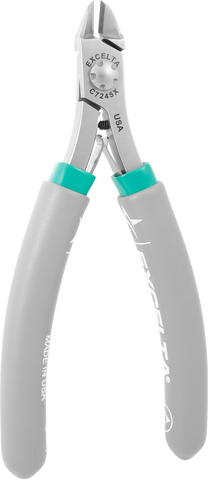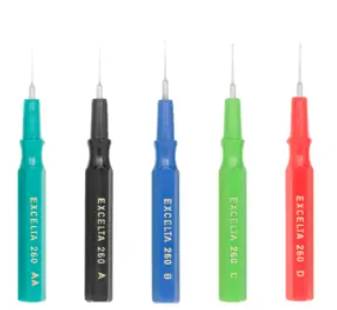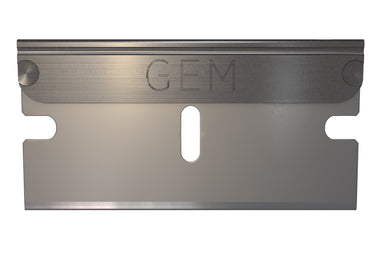- No products in the cart.
In the world of machining and metalworking, precision and efficiency are paramount. Enter carbide cutters, a cornerstone of modern cutting technology that has revolutionized various industries. With their exceptional durability, high performance, and versatility, carbide cutters have become a staple in workshops and factories around the globe. In this blog post, we embark on a journey to demystify carbide cutters, delving into their composition, benefits, and diverse applications that drive manufacturing and craftsmanship.
The Composition of Carbide Cutters
At the heart of every carbide cutter lies a remarkable composite material known as cemented carbide, often referred to as tungsten carbide. Cemented carbide is a blend of tungsten carbide particles, known for their extreme hardness, and a binder metal, typically cobalt. This unique amalgamation results in a cutting tool that boasts exceptional hardness, wear resistance, and strength.
Benefits of Carbide Cutters
-
Superior Hardness and Wear Resistance: Tungsten carbide is renowned for its hardness, ranking second only to diamonds. This exceptional hardness translates into impressive wear resistance, ensuring carbide cutters retain their sharp edges for extended periods, reducing the need for frequent tool changes.

-
Enhanced Heat Resistance: Carbide cutters exhibit remarkable resistance to heat generated during cutting operations. This property helps prevent premature tool failure, allowing for higher cutting speeds and feeds.
-
Extended Tool Life: The combination of hardness and wear resistance contributes to the extended tool life of carbide cutters. This longevity reduces downtime for tool changes and enhances overall productivity.
-
Versatility: Carbide cutters can tackle a wide range of materials, including ferrous and non-ferrous metals, composites, plastics, and wood. This versatility makes them invaluable across industries.
Applications of Carbide Cutters
-
Metal Cutting and Machining: Carbide cutters find extensive use in metalworking processes such as turning, milling, drilling, and threading. They excel in high-speed cutting operations and are favored for their ability to maintain sharpness in demanding environments.
-
Woodworking: In woodworking, carbide cutters offer precise and clean cutting of hardwoods, softwoods, and composite materials. They are commonly employed in tasks like carving, routing, and profile cutting.
-
Composite Materials: Carbide cutters play a crucial role in aerospace and automotive industries, where cutting composite materials like carbon fiber-reinforced polymers (CFRP) demands precision and durability.
-
High-Performance End Mills: Carbide end mills, a specific type of cutter, are utilized for intricate milling operations. They are essential for contouring, slotting, and creating complex shapes with fine details.
-
Medical and Dental Tools: The precision and hardness of carbide cutters make them ideal for manufacturing medical implants, surgical instruments, and dental tools.
-
Mining and Construction: Carbide-tipped drills and bits are commonly used in mining and construction for drilling into rock, concrete, and other tough materials.
-
Metal Forming: Carbide tooling is employed in metal forming processes such as cold heading and stamping to create intricate shapes and patterns.
How to Choose the Right Carbide Cutter
There are a few factors to consider when choosing the right carbide cutter for your needs, including:
- The material you are machining: The type of material you are machining will determine the type of carbide cutter you need. For example, if you are machining steel, you will need a carbide cutter that is designed for steel.
- The size of the cut you need to make: The size of the cut you need to make will also determine the type of carbide cutter you need. For example, if you need to make a small cut, you will need a carbide cutter that is smaller.
-
The depth of the cut you need to make: The depth of the cut you need to make will also determine the type of carbide cutter you need. For example, if you need to make a deep cut, you will need a carbide cutter that is longer.
Considerations and Maintenance
While carbide cutters offer an array of benefits, there are certain considerations and maintenance practices to keep in mind:
-
Proper Speeds and Feeds: Optimizing cutting speeds and feeds is crucial to prevent excessive wear and heat buildup. Consult manufacturer guidelines and machining experts for optimal parameters.
-
Coolant and Lubrication: Proper coolant and lubrication are essential to manage heat and extend tool life. This is particularly crucial when working with challenging materials.
-
Avoiding Chatter: Carbide cutters are sensitive to vibrations. Ensuring stable machining conditions and using proper tool holders can help minimize chatter and enhance cutting performance.
-
Regrinding and Resharpening: Carbide cutters can be regrinded and resharpened, but this requires specialized equipment and expertise. Improper regrinding can affect tool geometry and performance.
Conclusion
Carbide cutters stand as a testament to the marriage of cutting-edge materials science and industrial prowess. Their composition, benefits, and myriad applications have propelled them to the forefront of modern manufacturing and craftsmanship. Whether it's shaping metal, carving wood, or forming complex shapes, carbide cutters continue to shape industries by enabling precision, efficiency, and innovation. As technology evolves, so too will carbide cutters, carving a path toward even greater achievements in the realms of machining and beyond.
For over 40 years, Lab Pro Inc. has been committed to delivering the highest quality nitinol cutting tools such as Excelta carbide insert cutters, lab supplies, lab equipment, reagents, distance learning kits, and cleanroom PPE apparel. Renowned by global medical device companies and laboratories, we ensure exceptional quality in every product. Contact us online or call 888-452-2776 to learn more. Discover top-notch lab supplies and elevate your experiments today!












































